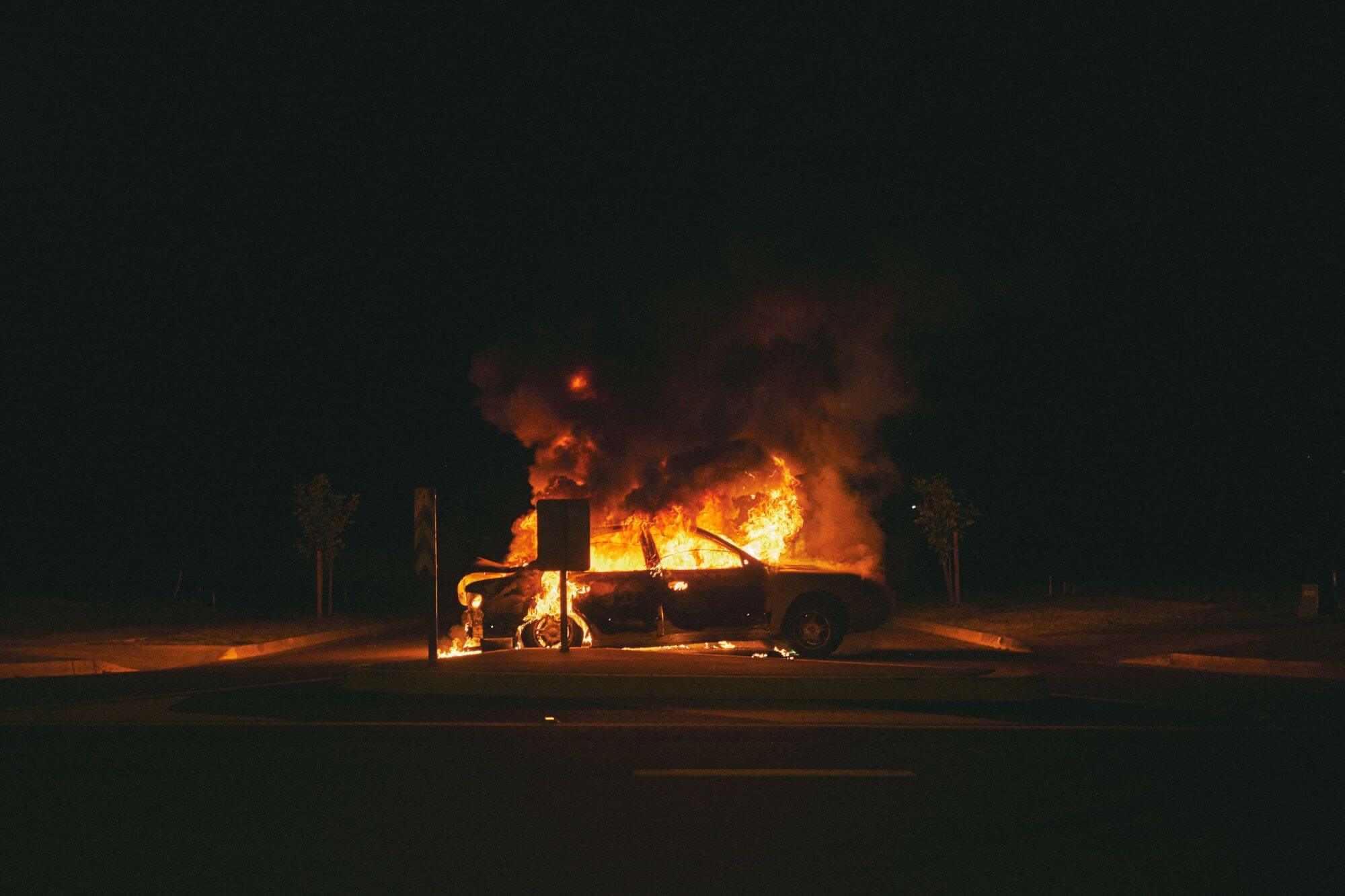Electric vehicle (EV) fires are notorious for their seemingly inextinguishable nature until the batteries burn out. Despite the fire safety risk incurred on the surroundings should an EV fire happen, EV fires are uncommon compared to vehicles running on petrol and diesel. According to global statistics, there are only 393 verified EV fires out of 30 million electric vehicles on the road from 2010 to June 2023. Even though it is unlikely for an EV to catch fire, being able to handle the incident in case it happens can minimize the damage to the surroundings and risk to emergency responders.
Identify if the burning vehicle is an EV.
Besides recognizing EV models available in the country, EVs have special number plates. The Ministry of Transport Malaysia is launching special number plates that begin with ‘EV’ followed by the registered number for all EVs eventually. If flames have engulfed the vehicle when emergency responders arrive, it may still be impossible to identify the burning vehicle through visual clues.
All EV fires start with thermal runaway. Thermal runaway is a chemical process caused by short circuits in the EV battery cells. Recognizing signs of thermal runaway is a reliable way to spot an EV fire:
- Dark and light vapor clouds
- Popping and hissing noises
- Projectiles of cell debris
- Directional, jet-like flames or violent deflagration
Carry out exposure protection.
Because an EV fire has a high risk of reignition even if the fire goes out, exposure protection is prioritized to ensure that the fire does not spread to the surroundings. Lots of water is used to suppress the flames and to cool down the battery to slow the thermal runaway process. Emergency responders in other countries even submerge the entire vehicle in a pool of water for this purpose.
The best practice to deal with EV fires if time and location allow is to let the thermal runaway process run its course so that the fire will subside on its own. This can significantly reduce the risk of reignition when the vehicle is transported or stored in another location, causing fire incidents even days after the initial incident.
Deal with possible fire reignition.
Since EV fires start in the enclosed lithium-ion traction battery beneath the vehicle, emergency responders cannot carry out overhauls to ensure that the fire is extinguished.
Some measures are needed to prevent and deal with fire ignition:
- Monitor the vehicle using a thermal imaging camera
- Ensure there are no more popping and hissing noises
- Store the vehicle 15-30 meters away from other vehicles
——
The Fire and Rescue Department of Malaysia published the Guidelines On Fire Safety For Electric Vehicle Charging Bay (EVCB) in September 2023 to regulate the installation of EVCBs inside and outside commercial premises for fire safety. However, there is no guideline on the emergency response to an EV fire. With a projection of 50,000 commercial EVs in Malaysia by 2030, the emergency response teams of an organization need to keep up with the latest best practices in dealing with EV fires from reputable sources to prepare for unexpected incidents.


